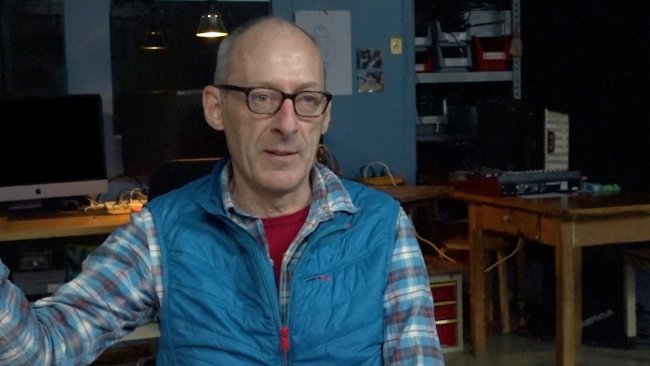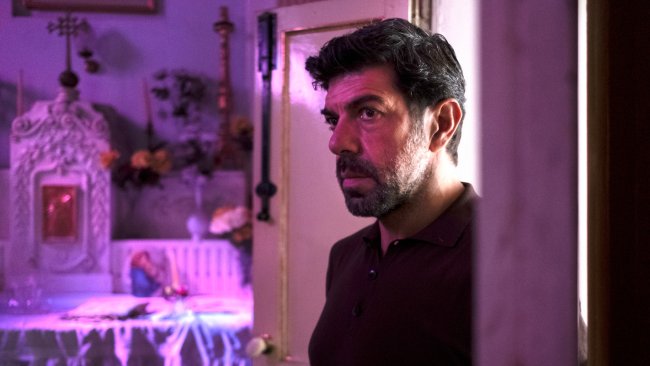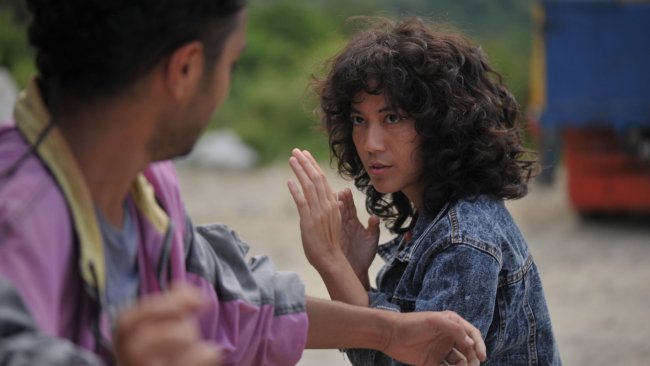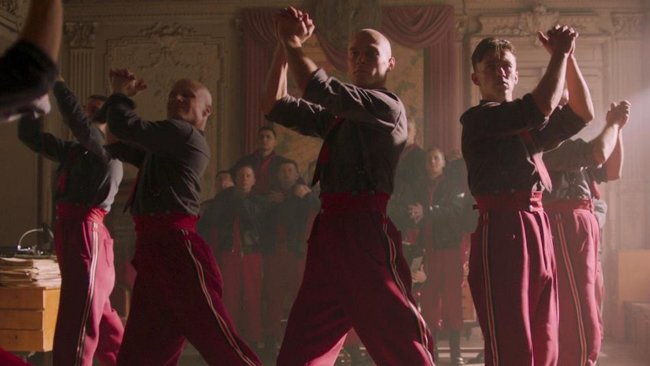Mapplethorpe: Look at the Pictures
[…] The evolution of Mapplethorpe’s artistic life is nothing but the description of the parabola of an entire society and its transformation, Mapplethorpe being its pioneer, its hero, its victim.
[…] One could say that, with Mapplethorpe, America missed the opportunity to accept pornography, as its disruptive power was preempted and neutralized by the power of show business – that he himself accepted.
[…] The video documents of Mapplethorpe’s last party, a few days before his death – a metaphysical feast and a mixture of glory, friendship and decadence – make our skin crawl.
Text: Giuseppe Di Salvatore
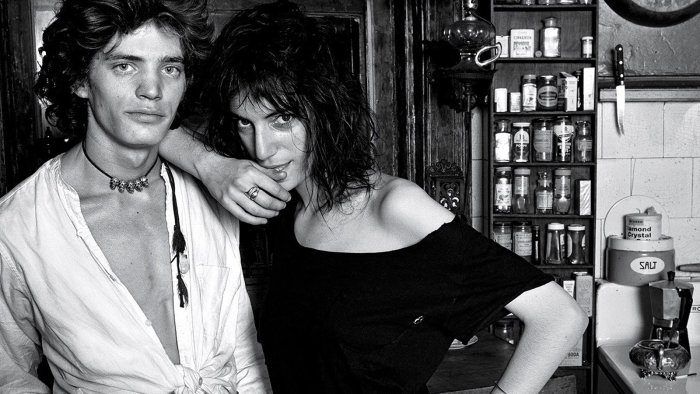
The duo Fenton Bailey and Randy Barbato have delivered a documentary on Robert Mapplethorpe that is saucy, full of energy, and with precise and breezy editing work. One of the virtues of the film is in its avoidance of the traps of biographical anecdotal curiosity. The life of Mapplethorpe is analyzed insofar as it is useful to understand the artist and the public figure. One of the most remarkable facts of his private life is precisely its transition into becoming a public paradigm; almost a concept. The duo, Bailey & Barbato, shows particularly well how his drive to extend beyond the limits – artistically, socially, morally – spawned from a need for experiences that, over the course of time, has transformed itself into a brand. And it is instructive to see how this shift took place in the late Seventies, when transgression was no longer perpetrated just for the sake of experience, as the expression of a deep internal impulse, but it became only a political statement and then, more and more, simply a commercial device. The evolution of Mapplethorpe’s artistic life is nothing but the description of the parabola of an entire society and its transformation, Mapplethorpe being its pioneer, its hero, its victim.
The portrait of Mapplethorpe is the portrait of an era, from the explosion of the rock scene to the shock of the AIDS epidemic. The documentary involves an exceptional bunch of witnesses who create a collective narrative, in which Mapplethorpe is far from being seen as the object of hagiography. In this way, Mapplethorpe – Looking at the Pictures gives us a deeper understanding of both the person and the social phenomenon that he has incarnated. The focus of the documentary is largely on the more general question of the image, and its social visibility, that Mapplethorpe tried to emphasize. He came to photography when the private use of the camera was at its peak, gaining, with the Polaroid, the chance of becoming immediate. He embraced the pleasure in the “accidental” that spread from the home movies to pop art, adding a quite classical taste for the glamour in his pictures. The result: he gave his images a striking immediacy, also thanks to their explicit sexual content.
Actually, concerning the sexual content that made him so famous – and infamous –, we could say that Mapplethorpe quickly escalated from the erotic to the sexual, up to the genital, as if they were lands of conquest. And, in this way, he was slowly absorbed by the logic of the scandal, followed by the logic of the spectacle, becoming, in the end, a pricy toy for art dealers and journalists. One could say that, with Mapplethorpe, America missed the opportunity to accept pornography, as its disruptive power was preempted and neutralized by the power of show business – that he himself accepted. «Look at the pictures» said the Republican senator Jesse Helms, in a prosecuting tone, asking for censorship in 1990: looking at the pictures became the topic, no more the pictures themselves.
But the pictures are there, now, anyone can “enjoy” them as she/he wants. And this documentary is an important description of a phenomenon that concerns not only the vicissitudes of an artist, but it also testifies to the hidden power of images and the social limits of their visibility. In this sense, the example of Mapplethorpe remains highly meaningful even today. The video documents of Mapplethorpe’s last party, a few days before his death – a metaphysical feast and a mixture of glory, friendship and decadence – make our skin crawl. In this archive video, he – who was already more corpse than a living person – showed how far his images could go: staging his own starvation, he touched the very limits of pornography, and confirmed his destiny of being a pioneer.
This article contains a third-party video. If you would like to watch the video, please adjust your settings.
Watch
ONLINE STREAMING (Switzerland) on Filmexplorer’s Choice by filmingo.ch
Info
Mapplethorpe – Looking at the Pictures | Film | Fenton Bailey, Randy Barbato | DE-USA 2016 | 109’
First published: November 18, 2016
